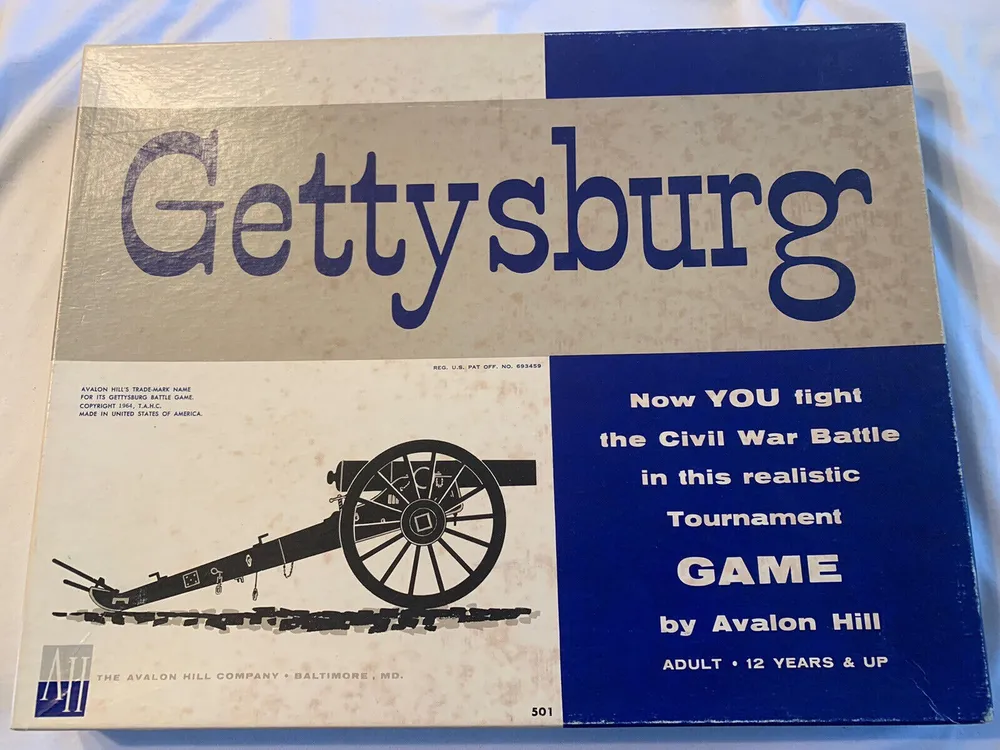Gettysburg (1958)
Gettysburg
“Gettysburg” is a board wargame published in 1958 by Avalon Hill, re-enacting the American Civil War battle of Gettysburg.
Groundbreaking game mechanics
The game’s rules were innovative and groundbreaking, using a square grid for tracking hidden movement and range cards for movement and firing ranges.
Awards and recognition
The game has been recognized for its historical accuracy and gameplay. The 125th Anniversary edition won “Best Pre-20th Century Boardgame of 1988” at the Origins Awards.
Influence on modern war gaming
Gettysburg has inspired modern war gaming and has been included in the book “Hobby Games: The 100 Best”.
Game Components of Gettysburg
How To Setup Gettysburg
Setup involves placing the map, distributing the counters according to the initial dispositions of the Union and Confederate forces, and preparing the range cards. The game starts on June 30th at 11 PM, just before the battle commences. Each player must ensure all units are placed correctly on the map, with the Union player moving first. The entire setup process takes about 15 minutes.
Gameplay Mechanics and Game Objective
Player Experience
Playing **Gettysburg** can be a complex and immersive experience, especially given its historical context and detailed mechanics. The game requires strategic thinking and tactical planning, as players must manage unit movements, combat engagements, and resource allocation. Despite its slow movement mechanics in the original version, the game offers a deep dive into the intricacies of the Battle of Gettysburg.
Pros
Cons
Personal Thoughts on Gettysburg
**Gettysburg** is a game for those deeply interested in military history and strategic gameplay. It is ideal for experienced wargamers who appreciate the nuances of historical battles and are willing to invest time in understanding the complex mechanics. While it may not be the best introduction for new players due to its complexity, it remains a significant piece of gaming history and a must-play for anyone serious about wargaming.
We are supported by our audience. When you purchase through links on our site, we may earn an affiliate commission, at no extra cost for you. Learn more.

